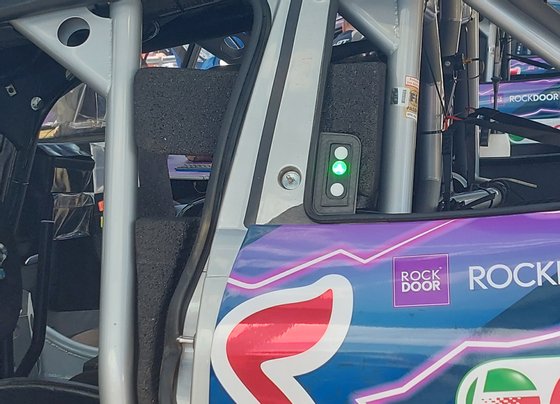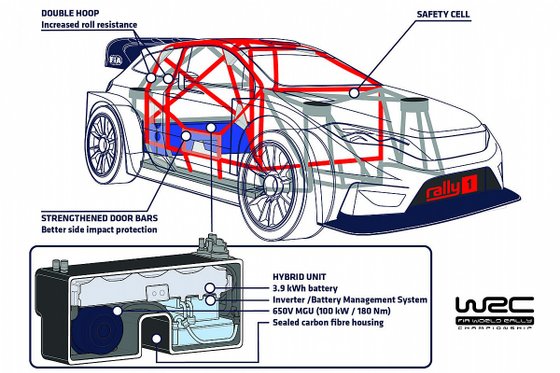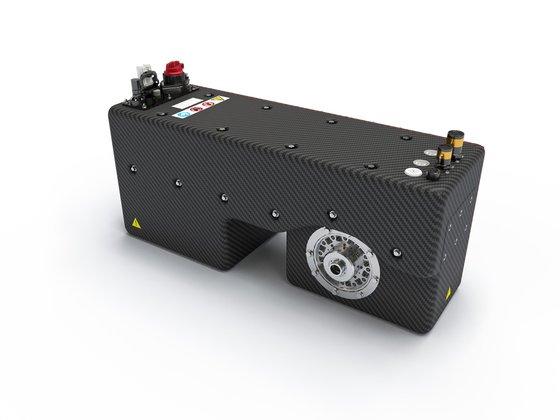7 photos
This year we witnessed the change of the old World Rally Cars (WRC) for the new Rally 1, which are intended to be More powerful – to increase the spectacularity –, more ecological (they are hybrids and use sustainable fuel), simpler Y safer. The new tubular survival cell, supported on a anti roll bar more robust complete, to better protect the pilots, which is the same for all brands, being then covered by panels that give it the exterior appearance that interests each manufacturer, having designed Ford a Puma, Toyota a Yaris and Hyundai an i20 . And the serious accidents that have already occurred this year have shown the validity of the solution. Let’s just say that Adrien Fourmaux (Ford) and Thierry Neuville (Hyundai) wrecked their cars in the opening races of the season and didn’t record a flat tire.
Hybrid mechanics with 31% more power
If the body changes are immense, was the mechanical component that evolved the most. On the one hand, gaining power, but on the other, simplifying the acquisition of new manufacturers, since all the hybrid part is the same and supplied to the manufacturers by the FIA. Powered by a battery with a capacity of 3.9 kWh, the electric motor delivers 100 kW, around 136 hp, for a short period which depends on the duration and type of special stage, but which will last about 10 seconds. The advantage is that later, during braking and deceleration, the same electric motor acts as a generator, recharging the battery with a power of 30 kW, to supply power to Rally 1 again. This hybrid set (which in practice is plug-in, since it can be recharged during assistance when connected to a charger) is supplied by the Germans from Compact Dynamics , properly protected from impacts in a robust carbon fiber casing. The hybrid system also makes it possible for Rally 1 to cover around 20km at a civilized pace, like the one they use for connections between stages.

Malcolm Wilson’s M-Sport, who drives the Ford Pumas, field a five-driver team and a total of nine chassis for all the championship races.
9 photos
The main engine in the new WRC cars remains the 1.6-litre turbo with direct injection, providing 380bhp. But this unit is now more environmentally friendly as the gasoline that is burned is produced from a mixture of biofuel and synthetic gasolinein order to reduce polluting emissions and be carbon neutral. The power of the two engines together exceeds 500 CV, which is 31.5% more, while the torque rises from 450 to 550 Nm, an increase of 22%, remarkable gains for a model that essentially has the same weight from previous WRCs. If these increases were achieved with just a larger combustion engine, the WRC would have much higher consumption and emissions, and the hybrid system would allow it to claim environmental responsibility that will attract sponsors and new brands.
Red, green and blue lights warn of danger
Rally cars have always been exposed to violent accidents, running the risk of hitting rocks, trees or falling off cliffs. Now that there is a high-density battery inside and cables that circulate a lot of energy, a stronger touch can cause serious problems, from the rupture of a cell that leaks electrolyte and catches fire, to a cut cable that allows current to flow to the chassis, which can electrocute whoever touches it, to put it back on the road or to help the pilots.

Red at the top, green in the middle (on), and blue at the bottom. These are the lights that warn the public and mechanics of the condition of the vehicle and the passengers.
To avoid accidents with the public and even with mechanics and emergency medical personnel, the FIA created a B-pillar warning light system that inform anyone who approaches of the state of the car. The green light is what everyone wants to see, as it ensures the safety of the vehicle, indicating that everything is going well with the Rally 1 high-voltage hybrid system.

As soon as the traffic light turns red, there is a panic or, at least, the time has come to redouble our attention, since the electrical system of the racing cars will have one or more parameters outside the regulatory values. The public must not approach and only specialized personnel can intervene, similar to what happens with an electric road vehicle, after suffering an accident or reporting a serious anomaly.
There is also a blue light intended to inform that the vehicle has suffered a severe impact, capable of endangering the structural stability of the model or the health of the pilots. One and the other must be seen quickly by specialists, engineers for the former and doctors for the latter. This is because if the structure can withstand a deceleration of 70G, according to Tim Jackson, the engineer responsible for the development of the Puma, it is necessary to ensure that after the impact it does not present deformations or microcracks and that the pilots can withstand another impact from the same dimensions.
Simpler, but not necessarily cheaper
Aware that they would have to bear the costs of the hybrid system, which is provided by the German company that also equips the team of the Audi ABT Formula E, the builders made some savings to simplify the Rally 1 and reduce its costsmaking the new models more interesting for brands that want to participate in the World Rally Championship.
The center differential of previous WRCs is gone, as are the six-speed gearboxes and steering wheel paddles.. Instead, there are now integral transmission systems with just two differentials (front and rear), in a simpler and cheaper solution, similar to that used in WRC2. The gearbox is now just five speeds and control is now a floor-mounted lever, with the FIA removing the only two functions that required a hydraulic circuit, making WRC cars more expensive and complex. But do not think that the new Rally 1 are a bargain, because if the WRC 2021 about 1 million euroswell above the €190,000 of WRC2, Hybrid rally cars are not far behind.

This is the hybrid drive provided by Compact Dynamics. It has a battery with 3.9 kWh and a motor with 136 hp
The tubular chassis is the same for everyone, as is the hybrid system, which reduces the total cost and, above all, the investment associated with development. To compensate for the additional weight of the hybrid system, which is around 100 kg, it was necessary to use carbon fiber body panels. Expensive solution, but allowed to recover 70 kgwhich makes Rally 1 just 30kg heavier than the 2021 WRC, i.e. just 2.5% heavier.
Ford M-Sport’s Tim Jackson explains here the innovations introduced in the Ford Puma Rally 1:
Source: Observadora








